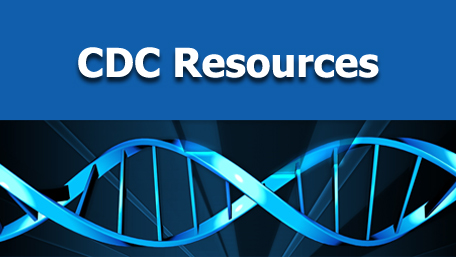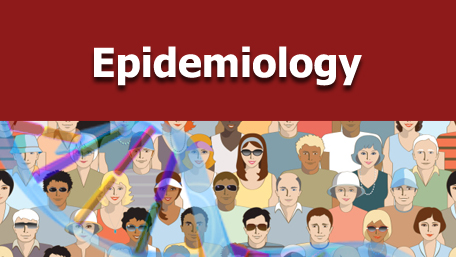Precision Public Health: a conversation
In today's blog, PHG Foundation chairman, Dr Ron Zimmern, continues his conversation with Dr Muin J Khoury, Director, Office of Public Health Genomics, Centers for Diseases Control and Prevention (CDC) and Dr Sandro Galea, Dean, School of Public Health, Boston University, on the place of precision medicine in population health interventions .
I am delighted that Dr Muin Khoury has taken the trouble to reply to my comments. Although some may take this dialogue to be somewhat esoteric, I think both of us will be of the view that the arguments have real practical implications.
We both agree that the tension between population and clinical medicine is real, but we need to understand that this has existed for many decades and is not a consequence of either genomics or of precision medicine. It is just that genomics and precision medicine has brought this into greater relief and perspective. Kerr White, of the Rockefeller Foundation realised over 25 years ago that such a schism existed and tried to use clinical epidemiology as the tool for bridging the divide. Dr Khoury’s thesis expresses the hope that “advances in technologies of precision medicine” might in time be of advantage for both populations and individuals, but points out that while my assertion that “a population is no more than a group of individuals” may be strictly correct, it misses the point that health status is tied not just to biology but to “geopolitical, environmental and socio-economic factors”. I agree totally and unreservedly with his view that health status is the result of the interaction between these external with innate biological factors. In our writings, both of us have tried to make this clear, and to say to our public health colleagues that what they believe to be important about the wider determinants of health, we also believe to be of the greatest importance.
The intention of my assertion was not to deny the existence or importance of these wider determinants. It was to make the point first, that the link between populations and individuals is that, no matter how one defines a particular population, the population is no more and no less than the set of those individuals so defined; second, that because biology works through individuals (and not through populations), those geopolitical, environmental and socio-economic factors must exert their population effects through biological mechanisms in individuals within that population; and third, that because we can in fact define populations in whatever way we like, populations are socially constructed, unlike individuals who have a reality that does not depend on definitional criteria. The consequence of these statements is that I believe there to be a critical difference between an intervention that one makes on the external world (whether through environmental, social, political or economic manipulation), an intervention that pays no attention to the differences between individuals; and interventions specifically directed at and possibly even tailored to individuals.
If that distinction is admitted, then we need to agree whether it is only the first type of intervention that is the proper work of public health professionals (leaving interventions on individuals to clinicians), or whether public health professionals are in their professional life to embrace both types of interventions. This is a very practical question that has implications for training and for practice. I have no real bias towards the one or the other, but I do believe that those in public health need to face up to the fact that disease prevention involves not just generalised attention to the wider determinants but also to more specific preventive clinical interventions; and to decide whether the second of these come within their professional remit or whether they wish clinicians to take on that agenda in the coming decades.
The second area on which Dr Khoury comments concerns the term ‘precision medicine’. He makes the point that there is a distinction between ‘personalised medicine’ and ‘precision medicine’, and that while the former “implies individual level intervention, the term precision medicine if interpreted in the context of multiple determinants of health, can lead to both individual and population interventions”. My own practice had been to use the two terms interchangeably, and to suggest that their essence is of an approach that
(a) treats individuals as whole persons
(b) empowers them to take greater responsibility for their own health
(c) manages their care in accordance with their biological characteristics and risk
But on this point I am happy to agree with Dr Khoury. Whereas one can apply the term ‘precision medicine’ to what he calls “population based interventions” (what I would prefer to refer to as my first type of intervention, one directed at “the external world” rather than at the individual) it would be somewhat of an oxymoron to refer to this this as ‘personalised medicine’. But that is by and large a semantic point.
The greater importance, however one choses to refer to it, lies in understanding that:
(a) externally generally directed interventions need to be conceptually separated from those directed specifically at individuals
(b) for those externally generally directed interv entions greater precision may be applied to the detection, identification, evaluation and tracking of health problems in populations and subpopulations
As to Dr Khoury’s closing remarks I could not agree more: “If we want to improve global health and health equity, it is time to heal the schism between medicine and public health. By bringing the two worlds closer together, precision public health co uld help more effectively harness the power of the new tools of science and technology, including genomics, big data and predictive analytics to improve the health of individuals and populations.” I would only add that we must supplement this with the personal approach I set out above, an approach for which either term might legitimately be used.
Read the original viewpoint by Dr Khoury and Dr Galea here and the initial response from Dr Zimmern here
Ron focuses on our strategic development and on international leadership in public health genomics.
More about RonMore by author
Public Health Genomics Knowledge Base (v1.2)


Precision Public Health: Beyond Genomics
This week, we highlight an upcoming webinar on precision public health: beyond genomics,October 19 at 2 pm.

Last Updated: Oct 03, 2016
- Precision Public Health: Beyond Genomics
NCI Free Webinar, October 19, 2pm - 2016 Precision Public Health Summit Full Report
UCSF, September 21, 2016 - Precision public health: a conversation
Ron Zimmern, PHG Foundation, September 12, 2016 - Precision Public Health: More Precision Ahead for Individual and Population Interventions
Muin Khoury and Sandro Galea, CDC Blog Post, September 7, 2016 - Precision Medicine and Population Health: Forging a Consensus
S Galea, Boston University, September 2016 - Progress lies in precision
S Desmond-Hellman, Science, August 18, 2016 - A Commentary on Khoury & Galea Will Precision Medicine Improve Population Health
R Zimmern, PHG Foundation, August 22, 2016 - Can Precision Medicine Benefit Public Health? Maybe …
Lisa Chedekel, Boston University School of Public Health, August 22, 2016 - Will Precision Medicine Improve Population Health?
Khoury MJ, et al, JAMA August 18, 2016 - Precision Medicine and Population Health: Dealing with the Elephant in the Room
Khoury MJ and Galea S, CDC Blog Post, August 18, 2016 - Population-based precision cancer screening: a symposium on evidence, epidemiology, and next steps.
Marcus Pamela M et al. Cancer epidemiology, biomarkers & prevention : a publication of the American Association for Cancer Research, cosponsored by the American Society of Preventive Oncology 2016 Aug - Will precision medicine improve public health
NCI online webinar debate by Drs S Galea and M. Khoury, June 27, 2016 - Precision Public Health Summit: Day 2, Morning Session
UCSF Video session features Bill Riley (NIH), Muin Khoury (CDC), June 7, 2016 - Precision Public Health Summit: Leaders Voice Hope for Change
USCF, youtube video, June 2016 - Precision Public Health: Big Data's Next Big Idea
Sue Desmond-Hellman, video presentation, Johns Hopkins, December 2015.


- Human (15)
- Pathogen (0)

- Human (1)
- Pathogen (0)





















.jpg)









No hay comentarios:
Publicar un comentario